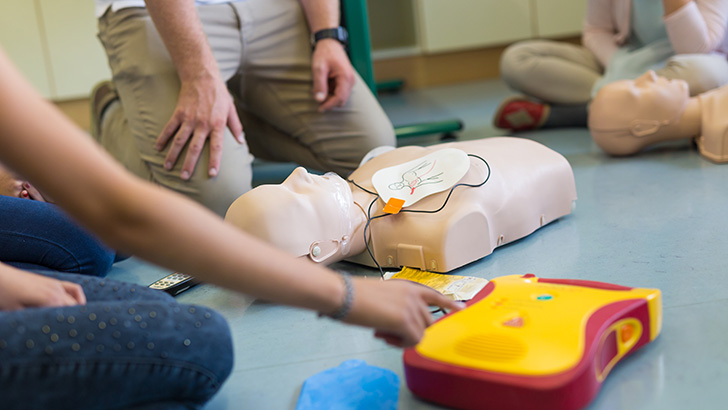When it comes to workplace safety, one question that often arises is, “How many first aiders do I need?” Ensuring the safety and well-being of employees should be a top priority for any business. To address this concern, companies in Northern Ireland and elsewhere need to carefully assess their unique needs and circumstances to determine the appropriate number of trained first aiders.
The Health and Safety (First Aid) Regulations (Northern Ireland) 1982 sets out the legal requirements for first aid provision in workplaces in Northern Ireland. According to these regulations, employers are responsible for providing adequate and appropriate first aid equipment, facilities, and personnel. But how do you determine the number of trained first aiders required in your workplace? Let’s explore some key factors to consider:
- Workplace Size and Layout: The size and layout of your workplace play a significant role in determining the number of first aiders needed. Larger or multi-story facilities may require more first aiders to ensure that assistance can be quickly provided in an emergency.
- Nature of Hazards: Consider the nature of the hazards present in your workplace. High-risk industries, such as construction or manufacturing, may require more trained first-aiders due to the increased potential for accidents and injuries.
- Employee Numbers: The number of employees in your organization directly impacts the need for first aiders. A larger workforce typically requires more first-aiders to cover all potential emergencies adequately.
- Shift Patterns: If your business operates multiple shifts or has employees working outside regular hours, you must ensure that first aid provision is always available. Adjust your first aider schedule accordingly.
- Specific Health Risks: Some workplaces may have employees with specific health risks or medical conditions that require special attention. In such cases, additional first aiders with relevant training may be necessary.
- Distance to Medical Facilities: Consider how far your workplace is from medical facilities. If your location is remote or far from emergency services, it’s essential to have more trained first aiders on-site.
- Historical Incident Data: Review past incident data to identify any trends or areas of concern. If your workplace has a history of certain accidents or injuries, this information can help determine the number of first aiders needed.
- Training and Certification: Ensure that your designated first aiders have completed certified first aid training. In Northern Ireland, specific regulations and guidelines govern the content and duration of first-aid training. It is considered best practice to engage a training provider, such as Health Matters, who offers a regulated first aid course in the form of the Qualsafe Level 3 Award in First Aid at Work.
Once you’ve assessed these factors, you can calculate the appropriate number of trained first aiders required for your workplace. Remember that it’s crucial always to maintain enough first aiders, as absences and turnovers can affect coverage.
In conclusion, determining the number of trained first aiders your business needs requires careful consideration of workplace size, hazards, employee numbers, shift patterns, health risks, proximity to medical facilities, historical incident data, and proper training and certification. Ensuring that you have an adequate number of first aiders on hand is a legal requirement and a critical step in safeguarding the health and well-being of your employees in Northern Ireland and beyond.
First aid training is readily available in Northern Ireland through accredited training providers. Health Matters have regular public course dates available from both Belfast and Newry. Alternatively, we can deliver to a private group within your workplace. For more information and to check upcoming dates, click the ‘Upcoming courses’ button below.

